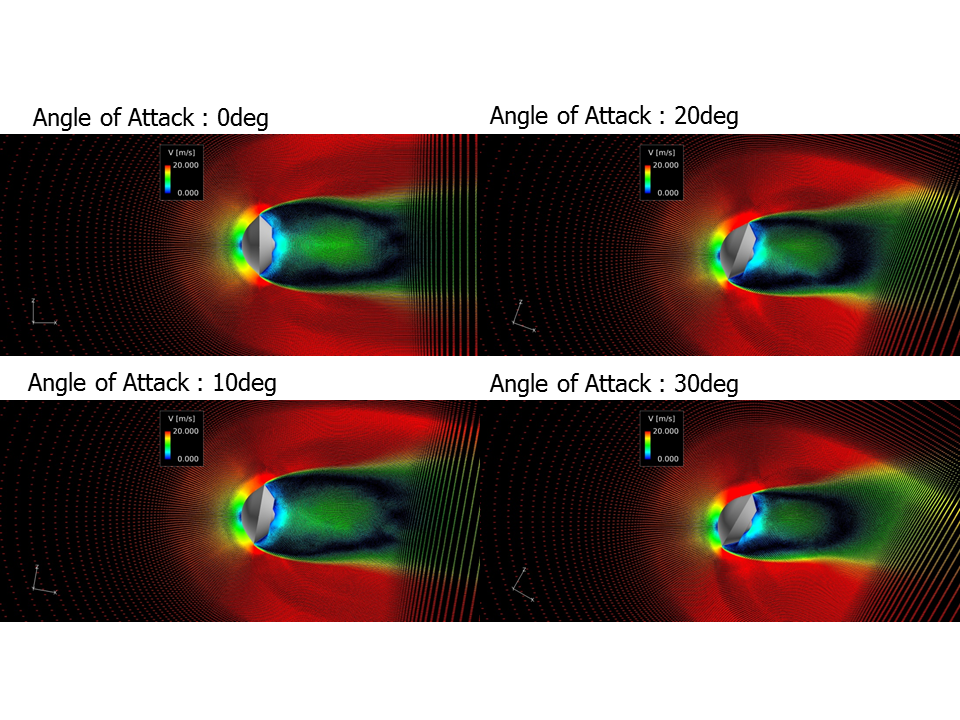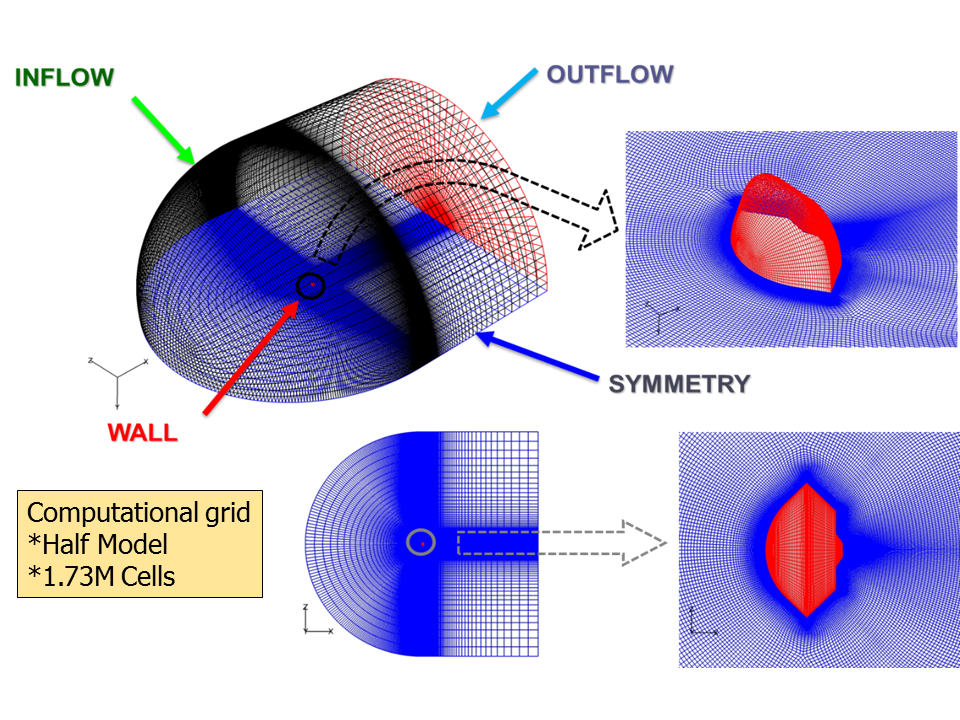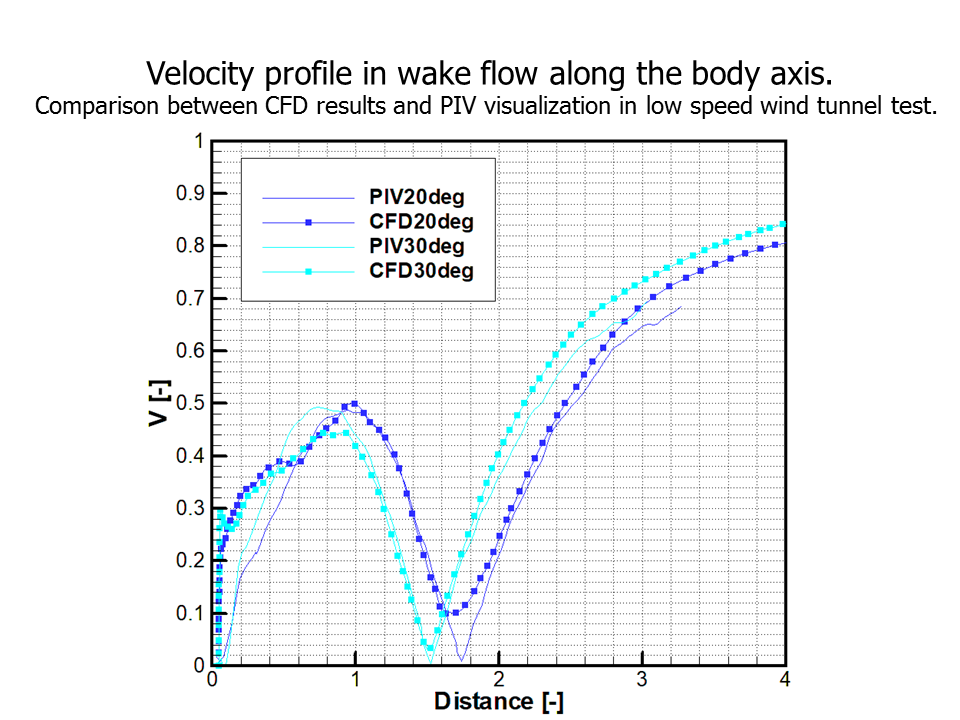Research and Development of Sample Return Capsule for future planetary exploration
JAXA Supercomputer System Annual Report April 2017-March 2018
Report Number: R17EU1600
Subject Category: Space and Astronautical Science
- Responsible Representative: Kazuyuki Miho, ISAS Program Office
- Contact Information: Kazuhiko Yamada yamada.kazuhiko@jaxa.jp
- Members: Kazuhiko Yamada, Yusuke Higo, Kazuki Nohara, Tomoya Kazama
Abstract
Hayabusa’ is the first sample return mission to an asteroid in deep space and proved its significance worldwide. The sample return mission will become one of the important missions in future planetary exploration. A sample return capsule is indispensable technology to realize it. The objectives of this activity are to take over its heritage and to enhance its technology in order to realize the flexible and attractive future sample return mission.
Reference URL
N/A
Reasons for using JSS2
Computational fluid dynamics related the sample return capsule was carried out using super computer. These results will be reflected in the design of future sample return capsules. It is generally difficult to reproduce the fluid dynamic condition in free flight of sample return capsule in ground tests. The numerical simulation is useful to understand the fluid dynamics phenomenon. However, the numerical simulation related to fluid dynamics requires the large computational resource. So, the super computer is indispensable. Its complex fluid dynamics around the sample return capsule can be understood, combining the results of both ground tests and numerical analyses using a super computer.
Achievements of the Year
In this year, the numerical fluid analysis was carried out, focused on the wake flow field of Hayabusa-type sample return capsule using the numerical code with Baldwin-Lomax turbulence model (Fig.1). A wake flow field is important information for the design of the parachute deployment method and for the evaluation of the aerodynamic instability. In this study, the effect of the flow conditions including an angle of attach and an uniform velocity on the wake flow field was investigated (Fig.2). Additionally, these numerical results were compared with experimental results, that is visualized wake flow in low speed wind tunnel by PIV method in order to confirm the validity of the adopted numerical analysis method (Fig.3). In the future, this numerical code and method will be utilized for the development of the aerodynamics database to the future sample return capsule design and for the evaluation of aerodynamic performance.

Fig.2: Flow field around the Hayabusa-type sample return capsule in the case of vairious angle of attacks.
Publications
■ Presentations
1)Kazuki Nohara, “Numerical simulation and flow visualization of wake flow field of Hayabusa-Type sample return capsule”,Symposium on Flight Mechanics and Astrodynamics: 2017, sagamihara.
Usage of JSS2
Computational Information
- Process Parallelization Methods: MPI
- Thread Parallelization Methods: N/A
- Number of Processes: 64
- Elapsed Time per Case: 104.00 hours
Resources Used
Fraction of Usage in Total Resources*1(%): 0.01
Details
Please refer to System Configuration of JSS2 for the system configuration and major specifications of JSS2.
| System Name | Amount of Core Time(core x hours) | Fraction of Usage*2(%) |
|---|---|---|
| SORA-MA | 80,382.74 | 0.01 |
| SORA-PP | 15.28 | 0.00 |
| SORA-LM | 0.00 | 0.00 |
| SORA-TPP | 0.00 | 0.00 |
| File System Name | Storage Assigned(GiB) | Fraction of Usage*2(%) |
|---|---|---|
| /home | 028.61 | 0.02 |
| /data | 286.10 | 0.01 |
| /ltmp | 5,859.38 | 0.44 |
| Archiver Name | Storage Used(TiB) | Fraction of Usage*2(%) |
|---|---|---|
| J-SPACE | 0.00 | 0.00 |
*1: Fraction of Usage in Total Resources: Weighted average of three resource types (Computing, File System, and Archiver).
*2: Fraction of Usage:Percentage of usage relative to each resource used in one year.
JAXA Supercomputer System Annual Report April 2017-March 2018




